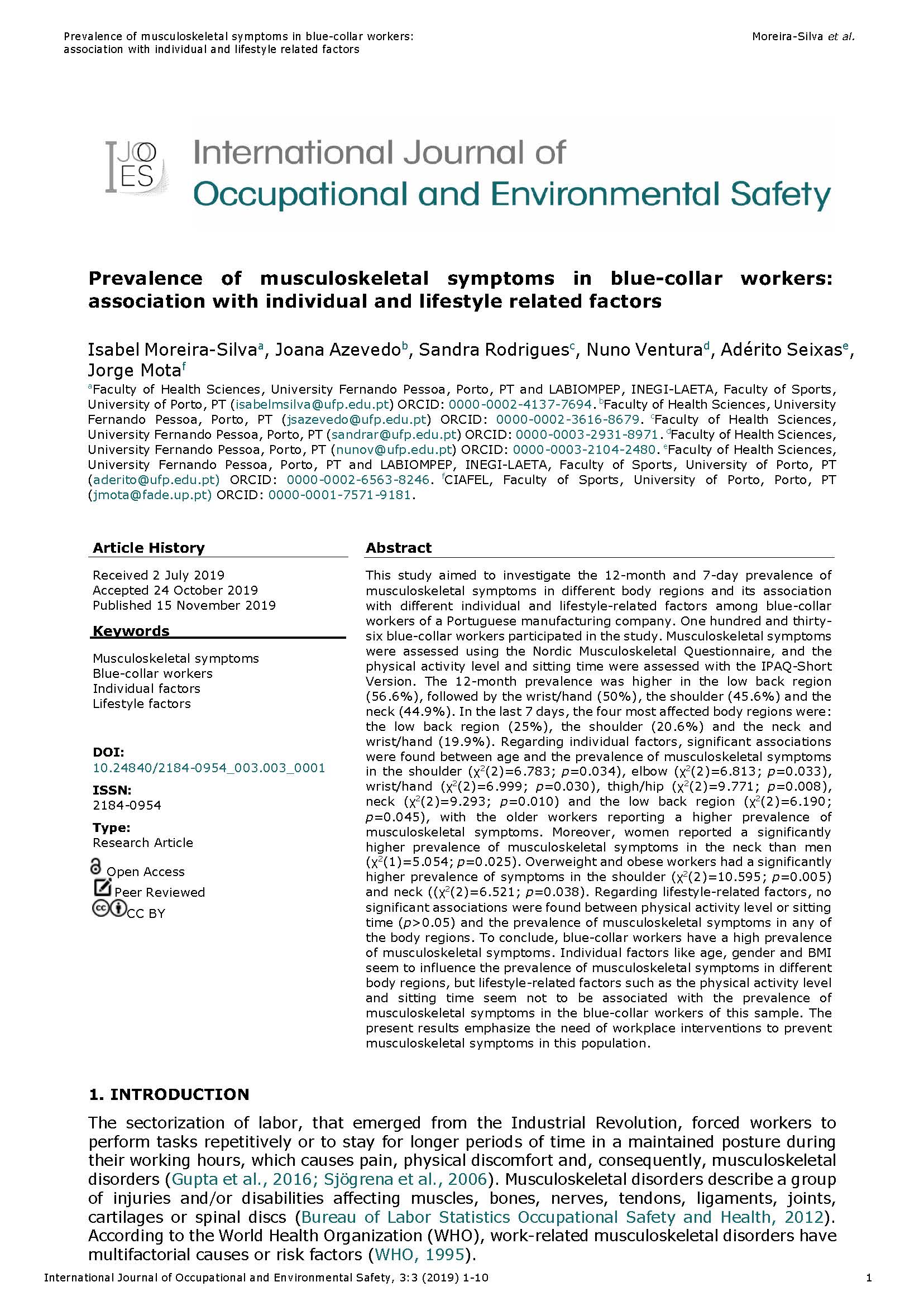Prevalence of musculoskeletal symptoms in blue-collar workers: association with individual and lifestyle-related factors
Main Article Content
Abstract
This study aimed to investigate the 12-month and 7-day prevalence of musculoskeletal symptoms in different body regions and its association with individual (age, gender and BMI) and lifestyle-related (physical activity level and sitting time) factors among blue-collar workers of a Portuguese manufacturing company. One hundred and thirty-six blue-collar workers participated in the study. Musculoskeletal symptoms were assessed with the Nordic Musculoskeletal Questionnaire, and physical activity level and sitting time were assessed with IPAQ-Short Version. The 12-month prevalence was higher in the low back (56.6%), followed by the wrist/hand (50%), the shoulder (45.6%) and the neck (44.9%). In the last 7 days, the four most affected body regions were: the low back region (25%), the shoulders (20.6%) and the neck and wrist/hands (19.9%). Regarding individual factors, significant associations were found between age and the prevalence of musculoskeletal symptoms in the shoulder (p=0.034), elbow (p=0.033), wrist/hand (p=0.030), thigh/hip (p=0.008), neck (p=0.010) and the low back region (p=0.045), with the older workers reporting higher prevalence of musculoskeletal symptoms. Also, women reported a significant higher prevalence of musculoskeletal symptoms in the neck than men (p=0.025). Overweight and obese workers had a significantly higher prevalence of symptoms in the shoulder (p=0.003), wrist/hands (p=0.030) and neck (p=0.033). Regarding lifestyle-related factors, no significant associations were found between physical activity level or sitting time (p>0.05) and the prevalence of musculoskeletal symptoms in any of the body regions. To conclude, blue-collar workers have a high prevalence of musculoskeletal symptoms. Individual factors like age, gender and BMI seem to influence the prevalence of musculoskeletal symptoms in different body regions, but lifestyle-related factors such as the physical activity level and sitting time seem not to be associated with the prevalence of musculoskeletal symptoms in studied sample. The results emphasize the need of workplace interventions to prevent musculoskeletal symptoms in this population.

